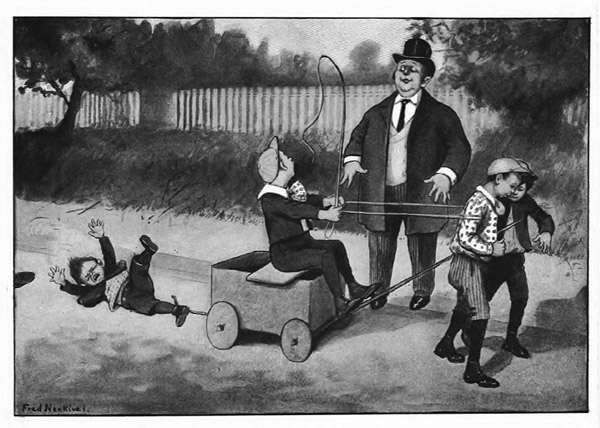
They claim he heckled John McCain at a press conference and accuse him of being a terrorist stooge for airing enemy footage of U.S. troops being gunned down — anything to mark him as, at best, too rough to be trusted or, at worst, outright unhinged. And though he’s still able to perform during his three-and-a-half-minute spots on CNN, it isn’t hard to make a case against him for erratic behavior. Fellow reporters claim Ware has bragged about being drunk on air (he denies it) and has destroyed television equipment during epic tantrums (“Things get broken in bureaus from time to time; it’s just normal wear and tear,” he demurs). He admits to having a terrible time sustaining relationships and once got in an altercation with another man over his former girlfriend (and fellow tabloid fodder) CBS reporter Lara Logan. He can’t sleep and watches trash TV until the sun comes up over Baghdad. —“CNN’s Prisoner of War,” Greg Veis, Men’s Journal
Of course the “original metrosexual” carries a purse;
no explanation necessary–hating Obama’s best and brightest;
the mysteries of Chinese all-you-can-eat revealed!
Commodity money, particularly in the form of gold and silver, is distinguished from credit money most of all by one spectacular feature: it can be stolen. Since an ingot of gold or silver is an object without a pedigree, throughout much of history bullion has served the same role as the contemporary drug dealer’s suitcase full of dollar bills, as an object without a history that will be accepted in exchange for other valuables just about anywhere, with no questions asked. As a result, one can see the last 5,000 years of human history as the history of a kind of alternation. Credit systems seem to arise, and to become dominant, in periods of relative social peace, across networks of trust, whether created by states or, in most periods, transnational institutions, whilst precious metals replace them in periods characterised by widespread plunder. Predatory lending systems certainly exist at every period, but they seem to have had the most damaging effects in periods when money was most easily convertible into cash. —“Debt: The first five thousand years,” David Graeber, Eurozine
Nobody knows nothing, which is why casinos keep making money;
these poor saps know the least, which may just make them lucky;
the fine Republican art of the punch to the nose that spites the face
Having shot Dial M for Murder in 3-D, Alfred Hitchcock was so displeased by the result that he released it in 2-D at its New York opening. The medium seems suited for children’s films, animation, and films such as James Cameron’s Avatar, which are largely made on computers. Cameron’s film is, of course, the elephant in the room…it’s used as the poster child for 3-D, but might it have done as well in 2-D (not taking the surcharge into account)? The second-highest all-time grosser is Cameron’s Titanic, which of course was in 2-D. Still, Avatar used 3-D very effectively. I loved it. Cameron is a technical genius who planned his film for 3-D from the ground up and spent $250 million getting it right. He is a master of cinematography and editing. Other directors are forced to use 3-D by marketing executives. The elephant in that room is the desire to add a surcharge. —“Why I Hate 3-D (And You Should Too),” Roger Ebert, Newsweek


